As a fat person, I often notice that body diversity is ignored in campus inclusion discussions.
Most campuses and student affairs professionals do not do enough to support fat students and end fat oppression. But inclusion must include body size diversity, or we are failing fat students in all racial, queer, and socio-economic groups.
Fortunately, it’s easy to weave fighting for fat rights into the diversity and inclusion work you are already doing on campus. Here’s my advice for doing so.
10 Supportive Practices
1. Learn
You can make environments more comfortable for fat people by taking small actions every day. But first, you must educate yourself on fat oppression.
Learn that fat people are not lazy nor stupid, though we are often portrayed that way. When you begin to dismantle your own disdain for fat bodies, you will create a more inclusive environment.

Recognize that fat people exist within every oppressed group. Understanding this intersectionality is especially significant for fat students of color. All fat students, especially at the intersection of race, can face dangerous judgment and disbelief from the medical community and the general population, which can lead to death.
Abandon the myth that fat equals unhealthy. Educate yourself on why diet culture harms everyone, read Hunger by Roxane Gay, and catch yourself whenever you find yourself thinking that a fat person should not wear a crop top.
2. Choose Comfortable Chairs
Most straight-size people (in other words, those who can shop for clothes in mainstream stores) don’t have to worry about chairs in campus offices, classrooms, or residence halls fitting them or breaking underneath them. But, when fat students enter a new space, they scan the room for chairs that will work for their bodies.
Make it easier on them by doing away with chairs that have armrests. If you oversee furniture selection, choose chairs that won’t painfully cut into fat people’s sides. Even better, do away with tiny hipster stools and chairs with tight armrests forever.
In academic spaces, make sure there are options for students to sit without restrictive tiny desks attached. They definitely won’t fit over my belly; I need a table and chair. Better yet, advocate for inclusive seating everywhere on campus. Most suppliers have accessible seating options.
Also, remember that what is accommodating for one person may not be accommodating for another. So, include students of all sizes and physical abilities in your decision-making process. Narrow your chair choices down and email the options to students. Ask them for feedback or to vote on what chairs they’d prefer.
3. Purchase Giveaways Everyone Can Enjoy
If you oversee ordering shirts for orientation or your next awesome event, be sure to order a wide range of sizes. Up to 5x or 6x is best. If you order from a company that doesn’t offer these sizes, it’s the wrong company to support. Tell them why you are taking your business elsewhere and find a company that is body-inclusive.
If options are truly limited, order shirts made of stretchy materials that are more accommodating to all body types. If you’ve got leftover shirts from last year (from the same company and made from the same material), let students know they can try them on to see what size will fit them best.
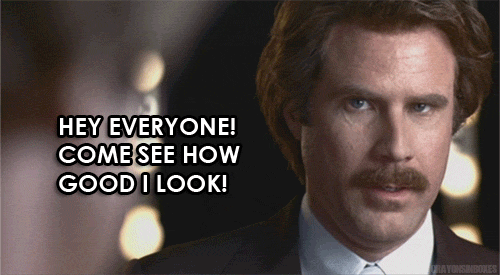
Don’t assume what sizes students will need. If your budget restricts how many shirts you can order, ask students to pre-select their choices. That way, you don’t have to over-order.
4. Make Event Spaces Inclusive
Be sure to consider how fat people may move through your event spaces.
I feel dread if I enter a space for training and the only place to sit is the floor. While I can sit there, it’s not comfortable and it puts me in the somewhat embarrassing position of having to plop down and get up awkwardly. So, again, remember to provide armless chairs at trainings and events.
If your training begins with an icebreaker, make sure it’s possible for everybody to participate in smoothly. Icebreakers that traditionally take place sitting on the floor can be adapted to sitting in chairs or standing in a circle.
When your event requires lots of movement from place to place across campus, be sure to provide enough time for people to move at their own pace. You should also offer accessibility options like a ride to the next spot or alternative activities.
If your event is a fancy schmancy ballroom situation, be sure there is enough room for fat people to move in between tables when they need to get up.
Finally, if you plan graduation, be sure the gowns are accommodating of people of size and if they aren’t, include information on how to get one easily. If getting a larger gown costs extra or is difficult to do, do that work for your students. Pay the extra cost for a larger gown and make sure that the process for buying a one is as easy as buying a straight-size gown.
5. Consider Travel Inclusivity
When I was a student, I was completely stoked about the opportunity to travel with my residence life department to my first conference. However, some fat students may experience dread and fear around traveling within a group of smaller people.
For example, seatbelts do not fit everyone. Be an ally with agency and give fat students the option of sitting in the front seat, which typically have longer seatbelts, if they would like. A simple “Would you prefer the front?” directly to the person of size, without judgment, would be perfection.
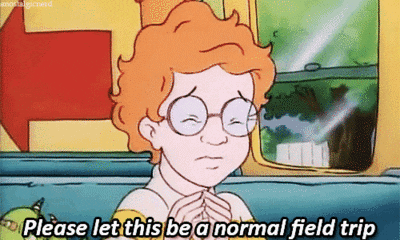
Even better, if you have a say in the maintenance of university travel vehicles, equip all seatbelts with extenders.
If your trip to NASPA or another conference includes air travel, choose Southwest because of its amazing Customers of Size Policy.
If you can’t fly Southwest, be sure to find out the airline’s policy in advance and ensure that students who need a second seat know that they can have one — without judgment. Make this option clear in all handouts and documents given to students. Then, cover that cost. If your travel program can’t afford a second seat for a student of size, you should not fly to the destination. Consider driving or adjusting the trip’s budget.
Also, if your trip includes an overnight, be sure each student can have their own bed. It’s difficult to share a bed with someone when you’re a person of size, and it may put students in a situation of being shamed by their peers.
6. Make Bathrooms Comfortable
Lots of bathrooms are not designed for people of size to use comfortably.
For example, the bathroom in my office only has one stall that’s comfortable for me. It really grinds my gears when thin colleagues use that one in front of me, as it’s pretty clear how uncomfortable it will be for me in the smaller stall. If you can easily fit, use the smaller stalls.
If you have authority in making bathroom design decisions, advocate for stalls that fit large people. They will also be more inclusive of people who use wheelchairs, crutches, or other mobility aids.
Bidets are also disastrously underrated in this country. For some fat people, it can be difficult to have enough mobility to get completely fresh in small office bathrooms.
So, consider adding bidets. They will be there for the people who need them, and the people who don’t can self-select toilet paper. I guarantee everyone will love them once they make the switch; you can’t match that clean feeling. If cost is a concern, you can purchase bidet attachments for under $40.
If bidets aren’t possible, or you don’t want your office to be European in a very cool and refreshing way, wet wipes can be a welcome sight.
7. Educate Others
At the institutional level, we have an amazing opportunity to help end the systematic oppression of fat people.
It is well documented that people of size face intense, death-threatening weight discrimination from the medical field. If you work with students who will go into medicine, you have a front-row seat to be able to end this dangerous oppression.
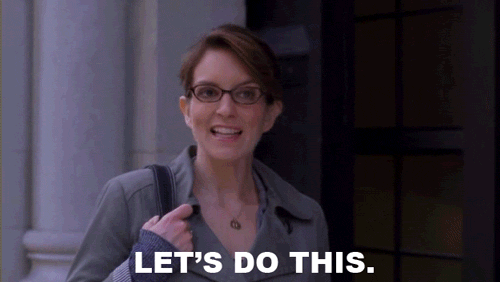
If you lead a team of wellness peer educators, have them read a book or an article about how diet culture perpetuates the harm of fat people. Some of my favorites include Shrill by Lindy West, The F*** It Diet by Caroline Dooner, and Dietland by Sarai Walker.
Educate students about weight bias in the medical field and how it’s harmful. Incorporating readings in classes or trainings and check out the Health at Every Size organization for some more great resources.
If you are an academic advisor in a college of medicine, send your students peer-reviewed articles on how diets don’t work and about weight bias in doctors’ offices.
Teach future doctors and nurses to ask patients if it’s okay to weigh them at an office visit. Teach these students to provide the same treatment for fat people that they would for thin people.
If you have a medical clinic on campus, talk with leaders there about what they are doing to support fat students. If they are doing nothing, ask if they are open to suggestions and share relevant resources with them. Ask them if they would be interested in learning more about Health at Every Size and send a kind email with a link in it.
If you make the conscious choice to educate all students about fat oppression, we can move the needle towards radical body acceptance and inclusion.
8. Embrace Fat Icons
A simple way to show fat students you won’t judge them is to embrace fat icons — without tokenizing them. Remember to show your love for fat icons with all students, not just when your fat students happen to be nearby.
Put Lizzo on your office playlists or hang a Miss Piggy quote about body positivity in your office. Invite fat-positive speakers — such as Jes Baker, Jessamyn Stanley, or Virgie Tovar — who can educate attendees on the importance of fat acceptance. If you can’t bring them to campus, follow them on social media and retweet them.
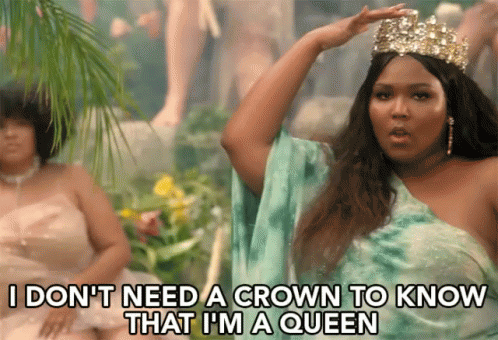
Ensure that your go-to fat icons are diverse, representing fat experiences among many intersections. Include women of color and trans individuals. When you learn from a wider variety of fat people, you will be able to be more inclusive of all.
Above all, embrace fat icons as fully amazing people, because they are. They don’t need pity from people who embrace them only in spite of their fatness.
9. Abandon Toxic Diet Ideations
Diet culture is everywhere. Fat people are constantly surrounded by people who don’t look like them and who talk about how badly they don’t want to look like them.
“I don’t want to get fat.” “I shouldn’t eat this cookie! I’m bad!” “Gonna have to spend three hours in the gym later to not become tubby!”
Eliminate this kind of language from your vocabulary. If you’re on a diet, don’t talk about it at work. It’s boring, and the undertone is that you expect fat people to be on a diet as well.
If it’s hard for you to stop talking about the Whole 30 or Keto dieting, consider how hard it might be for others to hear it. It can be extremely triggering for fat people or those struggling with or recovering from an eating disorder to hear diet talk in an otherwise safe and inclusive space.
Also, don’t assume every fat person is on a diet. Fat people can and deserve to be happy in the bodies they currently inhabit. Implement a no-diet-talk rule for your office and explain to students why you have implemented it. An old supervisor of mine enforced this rule, and it was like heaven on campus.
And don’t compliment fat people on their “bravery”. It is not brave for me to go for a jog, wear floral clothes, or eat a cheeseburger in public. It’s the body I have, so it’s the body I show up in. It’s not brave for fat people to live their lives.
10. Use Inclusive Language
Intentional language is vital for supporting students of size. You may have noticed that I sometimes refer to students as “fat” or as “students of size”. Both terms are acceptable.
But you should keep in mind, especially if you have thin privilege, that students’ perception of your language usage will change depending on your body type.
Some fat students may be at a place where they feel their body is wrong because of their choices. That is absolutely not true, but society is pickled with fat hate, and it can be hard to avoid internalizing this message.
Take the fat student’s lead. If they don’t refer to their body at all, do that. If they openly discuss how difficult it is to find cute clothes as a fat person, empathize with them.
When in doubt, I believe that using “students of size” or “people of size” is a good way to go. But remember that many fat people have different preferences.
Remember that supporting fat people on campus will make it a better community for everyone. Your voice and support can do so much to make sure fat students don’t have to face shame about their body size in your spaces on campus.
If you can teach your thin students to do this as well, you will have a hand in making the entire world a safer, more comfortable place for people of size.
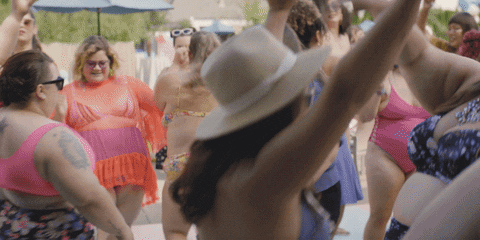
How have you supported fat students? Connect with us on Twitter @themoderncampus.
Editor’s Note: Hey reader! We recently released a podcast that you might enjoy. Here’s an episode that’s related to this blog post. You can learn more about Will There Be Food? here.





